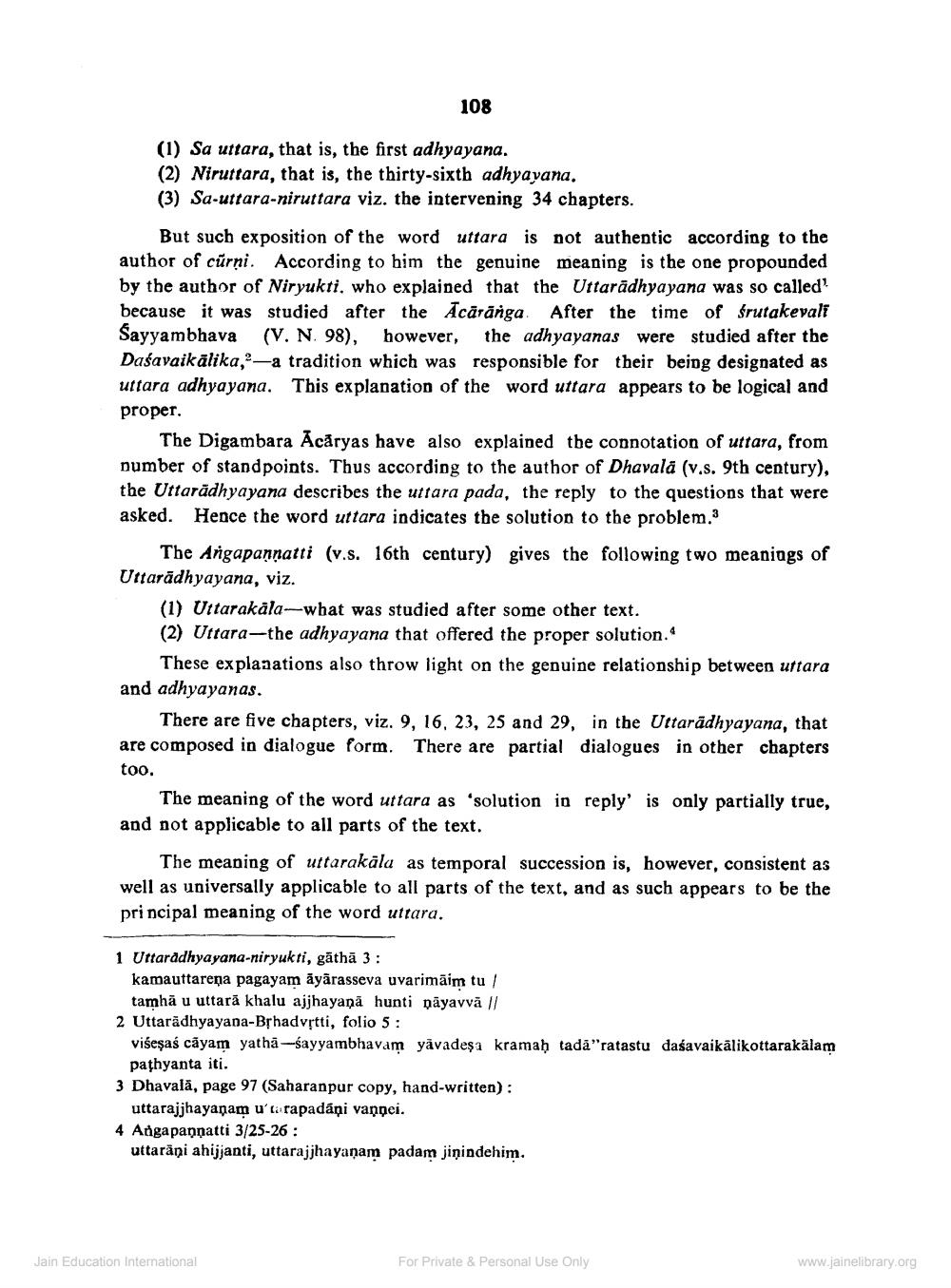________________
108
(1) Sa uttara, that is, the first adhyayana.
(2) Niruttara, that is, the thirty-sixth adhyayana.
(3) Sa-uttara-niruttara viz. the intervening 34 chapters.
But such exposition of the word uttara is not authentic according to the author of cürni. According to him the genuine meaning is the one propounded by the author of Niryukti, who explained that the Uttaradhyayana was so called' because it was studied after the Acaranga After the time of śrutakevali Sayyambhava (V. N. 98), (V. N. 98), however, the adhyayanas were studied after the Daśavaikälika,"-a tradition which was responsible for their being designated as uttara adhyayana. This explanation of the word uttara appears to be logical and proper.
The Digambara Acaryas have also explained the connotation of uttara, from number of standpoints. Thus according to the author of Dhavald (v.s. 9th century), the Uttaradhyayana describes the uttara pada, the reply to the questions that were Hence the word uttara indicates the solution to the problem."
The Angapannatti (v.s. 16th century) gives the following two meanings of Uttaradhyayana, viz.
(1) Uttarakala-what was studied after some other text.
(2) Uttara-the adhyayana that offered the proper solution.
These explanations also throw light on the genuine relationship between uttara and adhyayanas.
There are five chapters, viz. 9, 16, 23, 25 and 29, in the Uttaradhyayana, that are composed in dialogue form. There are partial dialogues in other chapters too.
The meaning of the word uttara as 'solution in reply' is only partially true, and not applicable to all parts of the text.
The meaning of uttarakala as temporal succession is, however, consistent as well as universally applicable to all parts of the text, and as such appears to be the principal meaning of the word uttara.
1 Uttaradhyayana-niryukti, gāthā 3:
kamauttarena pagayam āyārasseva uvarimāim tu /
tamhā u uttara khalu ajjhayaṇā hunti pāyavvā //
2 Uttaradhyayana-Bṛhadvṛtti, folio 5:
viśeşaś cayam yatha-śayyambhavam yavadeşa kramaḥ tadā" ratastu daśavaikālikottarakālam pathyanta iti.
3 Dhavala, page 97 (Saharanpur copy, hand-written):
uttarajjhayanam utrapadáņi vanpei.
4 Angapannatti 3/25-26:
uttarani ahijjanti, uttarajjhayanam padam jinindehim.
Jain Education International
For Private & Personal Use Only
www.jainelibrary.org




